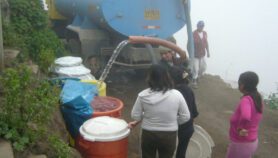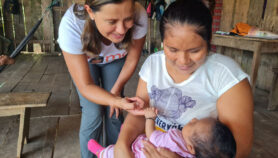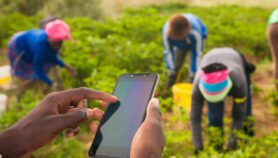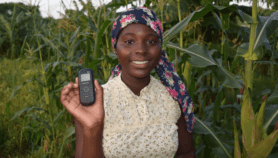By: Andrew Lee and Clair Grant-Salmon
Send to a friend
The details you provide on this page will not be used to send unsolicited email, and will not be sold to a 3rd party. See privacy policy.
We have joined Twitter and Facebook to build our science for development platform but we need your help to make the most of social media.
When we published a news story about nano 'tea bags' that can purify water three weeks ago, the item attracted about eight times our usual number of readers.
Why? The simple answer is social media, in this case a blog. The article was highlighted by SurvivalBlog.com, which describes itself as "the Internet's most popular daily blog on survival and preparedness topics".
Such experiences are common to virtually all organisations that communicate information online, but why wait to be surprised when others link to, promote and discuss your content?
A strategy to use the expanding raft of social media for wider engagement offers exciting opportunities to increase and manage these 'surprises', which is why we are launching SciDev.Net on Twitter and Facebook to network with all of you who share our commitment to science for development.
We have received encouraging signs that you are ready and willing to talk to us in new ways. Provisional results from our latest user survey reveal that two-thirds of 'policy stakeholders' already make use of tools such as Twitter, Facebook and LinkedIn. Almost three-quarters said that they would welcome greater engagement with us through social media.
And we are ready and willing to listen. We already welcome your thoughts on articles through comments at the end of each item, letters and your feedback in user surveys. And we encourage you to follow and debate our less formal reporting of key events through our blog.
Reasons to be sociable
There are several reasons why we are keen to explore social media for achieving our strategic objectives. The first is that, as the spread of our story on nano tea bags shows, it helps to widen the readership and reach of our material.
In an era when people increasingly expect information to come to them — rather than having to go out and find it themselves — the more channels we have for people to tap into, the wider our information will be spread.
We know too that some agencies are now making effective use of social media in their work, none more so than in fast response for disasters, as James Wilson describes in an opinion article about disease surveillance published earlier this month. It's a two-way, or multi-way, process, with new information channels opening up for us and others.
In the same way, social media also offers ways to improve access to research findings by those most likely to benefit, magnifying their potential impact. This has always been one of our key goals (for example, through our exclusive arrangements with Nature and Science, that give you direct access to the journals' relevant material).
Most importantly, social networking will allow us to engage more with you, our readers and users. We hope the quick and relatively informal nature of social media will encourage a more spontaneous, richer dialogue.
If we make mistakes or err in our judgements, we trust you to correct us; similarly, if others are excessively critical of our material, we hope you will come to our defence.
Raising our online profile
There are, of course, dangers in moving into this world. One is that we may inadvertently miss the tools and networks that are most widely used in certain parts of the developing world. We cannot, at this stage, hope to cover all the bases.
But we are keen to reach out to as many of you as we can, and again we would like you to guide us on which networks we should be joining and how we should use them to best effect.
For now, we have joined Twitter and Facebook. Our Twitter page will provide a flow of information not only about new stories on our website, but also about what we are doing and thinking, and what we are reading, watching and listening to.
We hope it will spark discussions about our material and help us identify gaps in our coverage or interesting new angles.
Our Facebook page, on the other hand, will look more at SciDev.Net as an organisation. Our aim is to regularly update it with inside information about our activities across the world, share ideas and information, provide insights into the field of science communication and link to other content. We will also ask your advice on story ideas and topics to cover, and welcome constructive criticism on our work.
In both cases, the profile we build — and the effectiveness with which we can spread our message about science for development — will depend on the quality of the networks we can establish. So we invite all of you to join us on Twitter and Facebook, contribute your ideas and perspectives, and help spread messages to your own networks.
We do not expect social media to radically change what we do. But we expect it will have a major impact on how we do it.
And as we continue to feel our way through the world of social media, we look forward to receiving your feedback and guidance to help us expand the impact of our work — and yours — in the years ahead.
David Dickson, Director
Andrew Lee, Web production manager
Clair Grant-Salmon, Marketing manager
SciDev.Net













